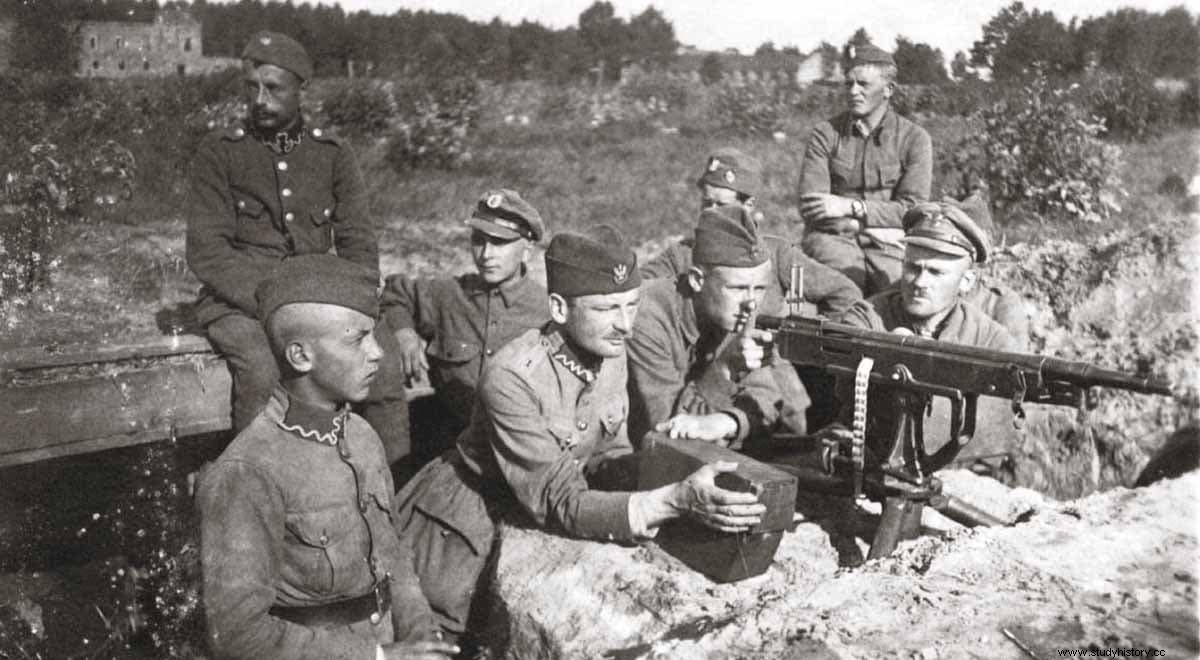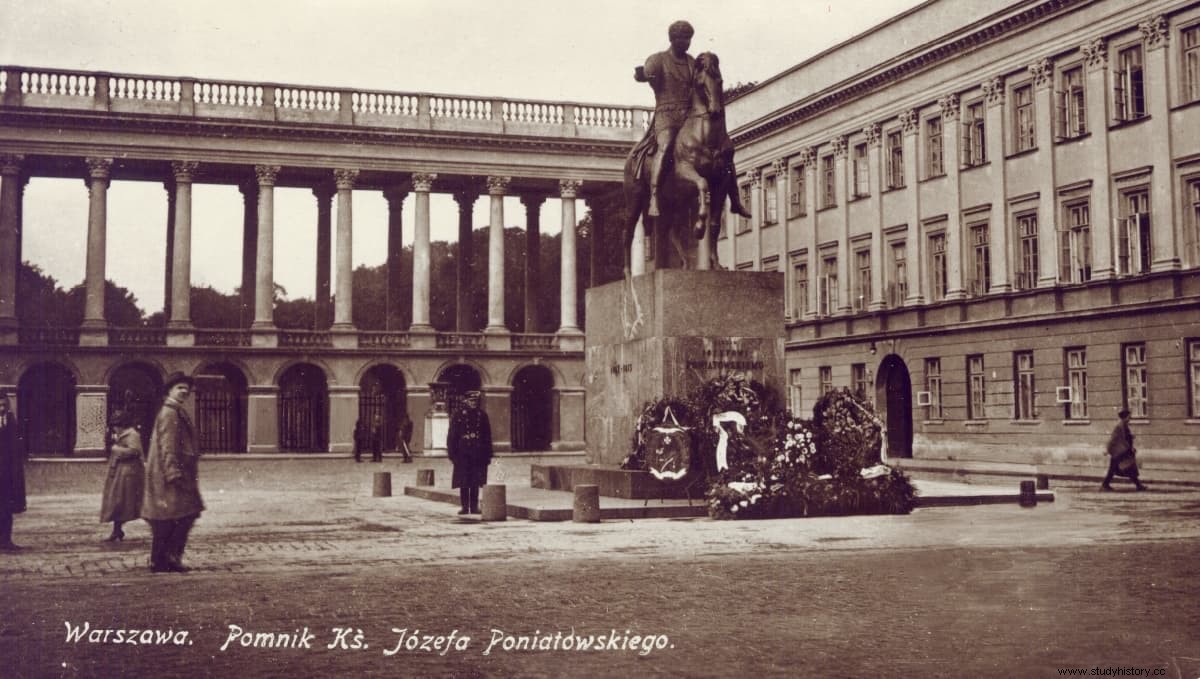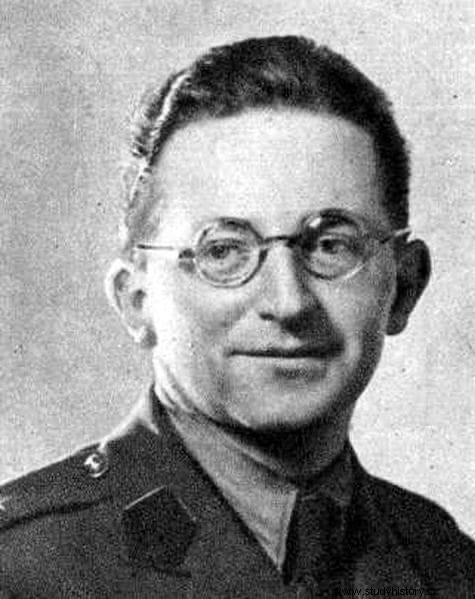Having seen her in a few World War II movies and novels, almost everyone knows that Enigma was the name of a German machine used to encrypt and decrypt codes transmission through an electromechanical system.
It is also known that the operation of this device, which had its equivalents in the United Kingdom and the United States (the Typex and the SIGABA, respectively), was discovered by Allied technicians.
What many will not know is that a Polish organization dedicated precisely to cryptanalysis was the one that laid the generic foundations for decoding long before the war broke out; We are talking about the Biuro Szyfrów .
Actually, there was a war that motivated his activity:the one that confronted Poland with what would soon be called USSR between 1919 and 1921.
The Poles of Marshal Józef Piłsudski, were launched in an expansion that sought to recover the traditional territories that they had in the 18th century while the Soviets tried to recover those lost due to the abandonment of the front during World War I, when the Revolution broke out. Since the Treaty of Versailles had tiptoed over that issue. The conflict was resolved after the victory of the former in the Battle of Warsaw, dividing up the aforementioned territories through the Treaty of Riga .

An important role was played in the course of events by the Sekcja Szyfrów , a predecessor agency of Biuro Szyfrów created by Lieutenant Józef Serafín Stanslicki in the spring of 1919. Aided by a trio of prestigious mathematicians (Stefan Mazurkiewicz, Wacław Sierpiński and Stanisław Leśniewski), he was able to crack the cryptographic codes used by the Red Army, which were somewhat outdated because the continuous state of war in the country had made it impossible to modernize those from the tsarist era. Therefore, the Polish armed forces were always informed of the movements planned by the enemy, being able to face him with advantage.
It is surprising to know that Polish cryptographers deciphered, sometimes in twenty-four hours but others in the same day, not only the messages of important commands such as generals Tukhachevsky, Sergieyev, Budionny or Gaya, but even those of Trotsky himself. , allowing troops to be mobilized with unusual speed wherever they are needed.
Apparently, they even learned of a famous discussion between Tukhachevsky and Budionny by radiotelegraphy. The truth is that the specialist technicians were ahead of their adversaries on both sides, since also the Soviets they intercepted enemy transmissions, only in much smaller numbers due to Poland's lack of radio stations and more modern security systems.
In any case, the excellent work of the Sekcja Szyfrów helped the Polish army open a gap on the left flank of the Soviet lines, allowing a wedge entry that gave them victory in Warsaw and, ultimately, forced the Soviet Union to agree to a ceasefire; This is what Piłsudski himself would say years later.
It was a glorious first step before the agency was renamed Biuro Szyfrów in 1931. after merging the Referat Radiowywiadu (Radio Intelligence Bureau) and the Referat Szyfrów Własnych (Polish Cryptographic Office), dedicating himself to developing codes for his country and, above all, deciphering those of others, in a task that included tracking and locating mobile radio stations of possible enemy agents infiltrated in Poland.

Between 1927 and 1928, Poland had acquired aGerman code encryption machine by intercepting a mail shipment that officially contained radio equipment of no great importance; but the complaints of the German embassy demanding its return raised the hare and the Poles opened the package, carefully analyzed the artifact and then carefully re-wrapped it, handing it over to the Germans as if it had never been opened.
Since the Enigma it had not yet been manufactured, it was probably a precursor, but it allowed the Poles to become familiar with the Teutonic codes and their encryption systems. When the machine began to broadcast the first radio messages, the technicians were able to decipher them. The war was still far away so the thing was of no consequence.
In 1930 Germany already had a first type of Enigma and the Poles, aware of course, began to work on a replica . It was not easy because the Germans progressively complicated the mechanisms, but in Poland they began to suspect the aggressiveness of the Nazi government that had risen to power in 1933 and redoubled their efforts.
By January 1938 the percentage of successful decoding was around 75%, which Marian Rejewski himself , one of the brilliant young mathematicians hired for it together with Jerzy Różycki and Henryk Zygalski , he considered that they could improve if they had more personnel, although there would always be an unsolvable remainder due to the poor quality of the transmissions.
In 1937 the headquarters of the agency moved from the headquarters of the General Staff - the eighteenth-century Saxon palace - to the Kabaty forest , where some facilities had been built ex profeso , partly to improve working conditions for staff and partly to make it more difficult for German Abwehr spies to gain access.

On September 1, 1939, World War II broke out. . The Wehrmacht attack to Poland was no surprise to the Polish General Staff, properly warned by Biuro Szyfrów , although this was not enough to stop the powerful German war machine .
That is why at the end of July of that year the Poles had informed the cryptologists of France and the United Kingdom of their advances, offering them all the material they had and even a replica of Enigma that they had made. Many analysts today believe that if the German submarines were unable to strangle British maritime traffic, it was thanks to the data provided by the Poles, which allowed early deciphering of the signals that the German captains were sending from the ocean.
When Poland fell, the Biuro Szyfrów destroyed its files to prevent them from falling into the hands of the enemy; part of the staff was evacuated to the southeast of the country, but the Soviet invasion on September 17 forced them to be transferred to Romania to finally, in a bizarre journey, reach France . However, others stayed and despite being arrested by the Gestapo, none revealed that they knew how to decipher their messages.
The famous Alan Turing he had the opportunity to exchange knowledge with Polish cryptologists in 1940; a collaboration that allowed the allies to definitively decode all German messages -who changed the codes every so often trying to avoid it- and, although Turing was the one who did the decisive work, a significant percentage was owed to his colleagues in Poland. This was later explained by Rejewski, recalling that the British had ten thousand people working on the matter while they were only three . The main benefit was avoiding duplication of effort and speeding up the process.
When France was taken, the Poles had to take refuge in Algeria, from where they went to Vichy . From there they provided information on a multitude of SS and Gestapo movements; Interestingly, they also analyzed the Soviet codes and cracked them.
Later, they were forced to leave French soil and tried to reach Spain but several of them -including Różycki- died in 1942 in the shipwreck Lamoricière . Jerzy Rekewski and Henryk Zygalski trekked across the Pyrenees, were robbed by their guide, and found the bones in a Spanish prison before being released by the Red Cross the following year. In the end they were able to reach Great Britain , where they joined the Polish army in exile.
With the end of the war the Biuro Szyfrów was closed because it was unnecessary. Rekewski returned to Poland where he lived for three more decades dedicated to other things, dying in 1980, while Zygalski preferred to stay in England until his death in 1978.
Several of his colleagues and their bosses fell into the hands of the Gestapo when they tried to flee to Spain, but, like those who had remained in Poland, none confessed, so the Germans never knew that their Enigma machine it was a valuable source of information for the Allies.
Fonts
Enigma. How the poles broke the nazi code (Władysław Kozaczuk and Jerzy Straszak) / Alan Turing, Enigma and the breaking of german machine ciphers in World War II (Lee A. Gladwin) / Enigma. The battle for the code (Hugh Sebag-Montefiore) / Mathematics and War (Bernhelm Booß-Bavnbek and Jens Høyrup) / Wikipedia.
Recommended book
Enigma:How the German Machine Cipher Was Broken, and How It Was Read by the Allies in World War Two (Christopher Kasparek and Thomas Troy)
